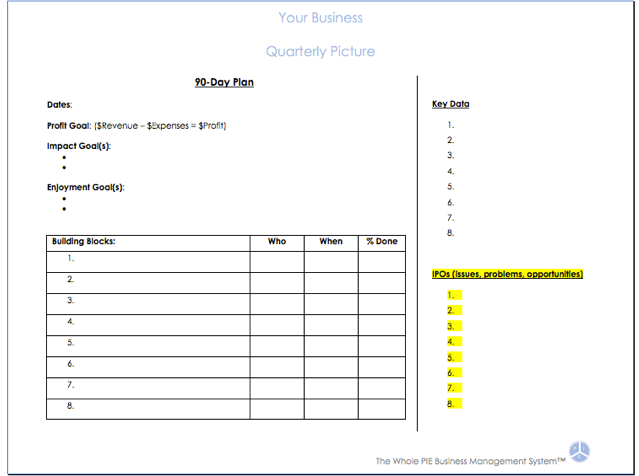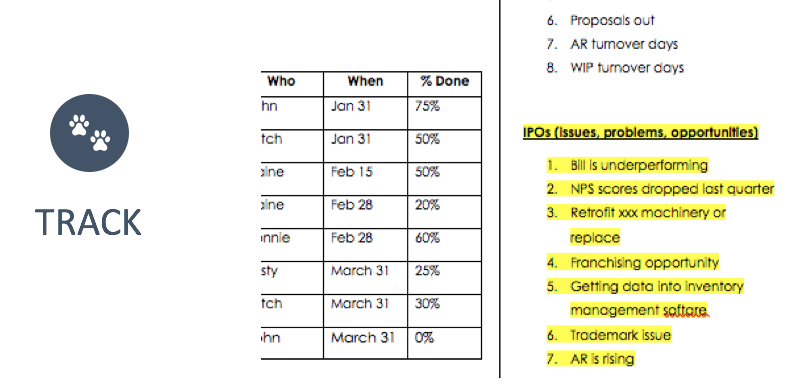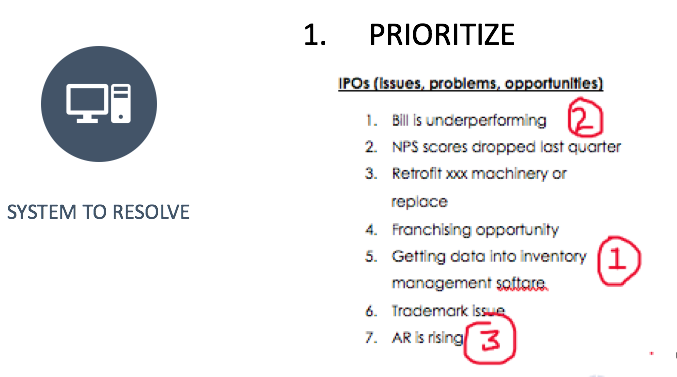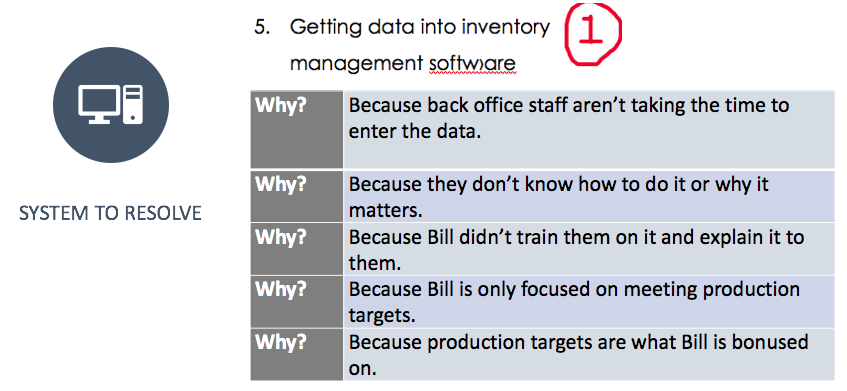Slay Your Monkeys: How to resolve recurring problems in your business

I recently put on a workshop for a about a dozen business leaders about solving recurring problems in their business once and for all. I called the session Slay Your Monkeys.
The title comes from a metaphor used in the business management book The One Minute Manager Meets the Monkey. In that book, the authors describe how employees often try to leave their problems—their monkeys—with their managers, rather than tackling the problem themselves after seeking some guidance from their manager.
The authors rightly stress how important it is for employees to leave their manager’s office with the monkey they walked in with. It’s the manager’s job to make sure that happens. If not, at the end of the day a manager might have five or ten monkeys in their office, messing around, creating chaos and ultimately overwhelming the manager.
Think of the problems in your business as monkeys jumping around creating chaos. One way to deal with them is to shut them in an office without windows and pretend they don’t exist. But sooner or later those monkeys will make some noise, cause distraction, and eventually find their way out.
A better way to deal with problems in your business is to implement a SYSTEM to resolve them; to Slay Your Monkeys once and for all. There is nothing that saps the energy of a team more than having to deal with the same problem over and over and over again.
Systematizing problem-solving in your business will help you:
- Avoid circling around an issue and kicking it down the road unresolved
- Reduce frustration and inefficiency in your business
- Get more of the results you want in your business, faster
So what is the Slay Your Monkeys process for problem solving?
It’s quite simple, actually. It involves three steps:
- Track your problems
- Create time and space to deal with your problems
- Implement a system to resolve your problems

TRACK
The first step is to create a parking lot for all the problems in your business (recurring or otherwise). This can be a list in a Word doc, Google doc, Excel sheet – whatever works best for you. One person on your team should be in charge of keeping the list, and then when anyone identifies a problem that can’t be (or doesn’t need to be) dealt with right away, it gets added to the list.
I encourage my clients to keep their list in their Quarterly Picture. It looks like this:

I call it the IPO list, for issues, problems, and opportunities – but you can call it whatever you like. The point is, if the problem isn’t tracked and written down somewhere, the likelihood of it getting resolved efficiently is almost nil.
Here’s an example of an IPO list:

CREATE TIME AND SPACE
The second part of the process is to create time and space every single week for your leadership team to dedicate to resolving problems in your business. The best way to do this is 1) to have a weekly leadership team meeting, and 2) to structure the meeting so that the majority of the time is spent on resolving problems.
Here is the agenda I recommend my clients use for their weekly leadership team meetings. You will see that 60 of the 90 minutes is allocated to agenda item #5 – IPOs.

SYSTEM TO RESOLVE
Now that you have a running list (parking lot) for your problems, and have carved out an hour a week for your team to allocate to them, you need to systematically resolve them. The system I recommend is called “Giving some PDA to your IPOs”. It involves three steps:
1. Prioritize: Spend 5 minutes to decide as a group which of the IPOs is most important.

2. Discuss: First, use the Five Whys technique to determine the root cause of the problem. Second, allow everyone to provide input on how the problem should be handled. It’s the meeting chair’s job to keep the discussion only on the problem being discussed.
The slide below shows an example of the Five Whys technique in action. Initially the problem is identified as not getting the data into the software, but by asking Why five times, the root cause of the problem is discovered: how the company’s bonus structure drives Bill’s actions and priorities.

3. Address: An IPO is addressed when 1) it is agreed by all that it is no longer an IPO; or 2) there is an agreed upon action item assigned to someone to report on at the next meeting. In the example above, the action items identified to address the problem might be:
- John to look at bonus structure
- Elaine to meet with Bill to develop training on data software entry
Repeat the PDA process for your remaining IPOs. Not all IPOs will be resolved in every meeting. That’s okay as long as you PDA your IPOs at each weekly meeting.
Give the Slay Your Monkeys process a try in your business. It works. It will reduce frustration for you and your team, it will energize you, and it will propel your business forward as you systematically resolve problems—especially energy-sucking recurring problems—in your business.
Not getting the results you want in your business? Maybe I can help. You might have some cracks in your 4P Foundation or you might need to rev up your Flywheel of Accountability. To set up a free 30-minute conversation about your business, contact me here. I’ll tell if you I can help, and I’ll tell you if I can’t. Either way, you’ll learn something from our conversation.



